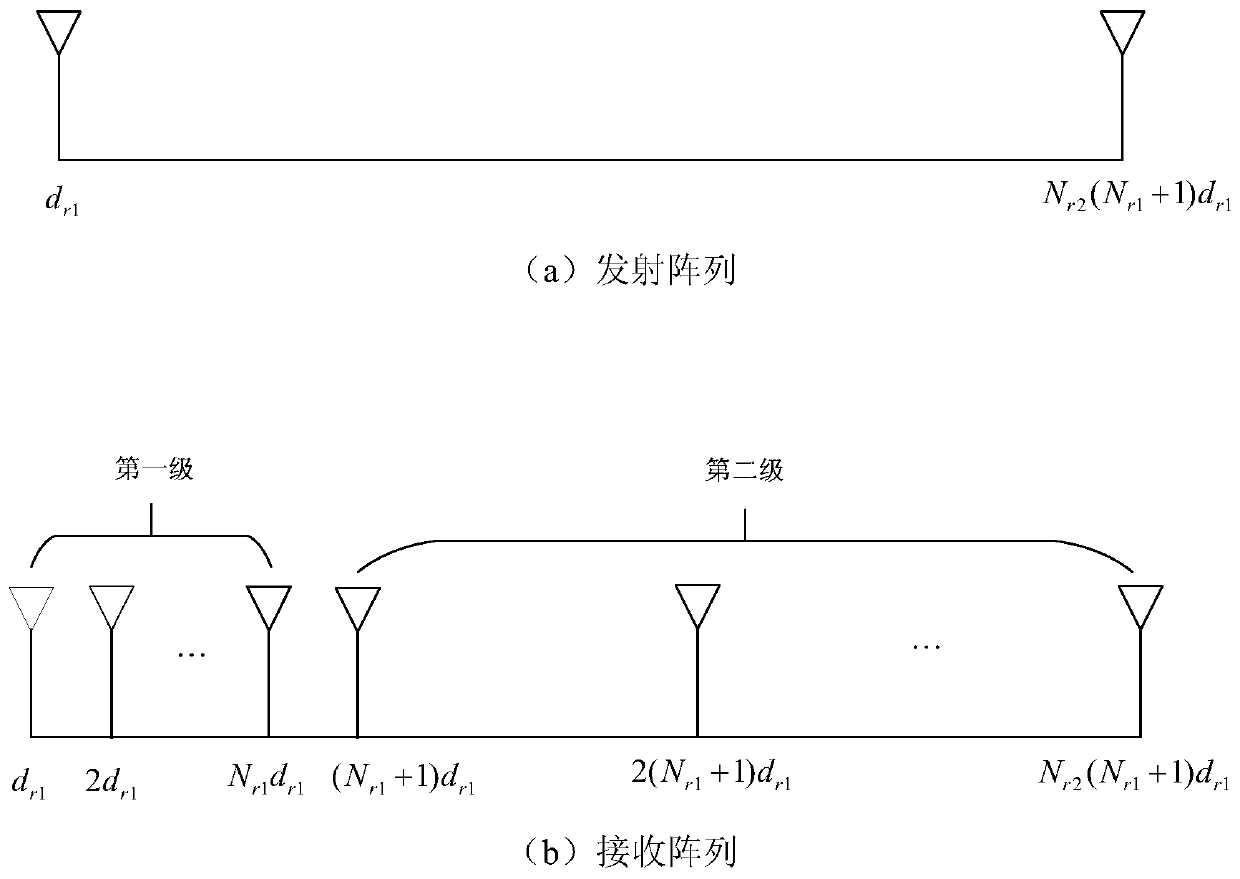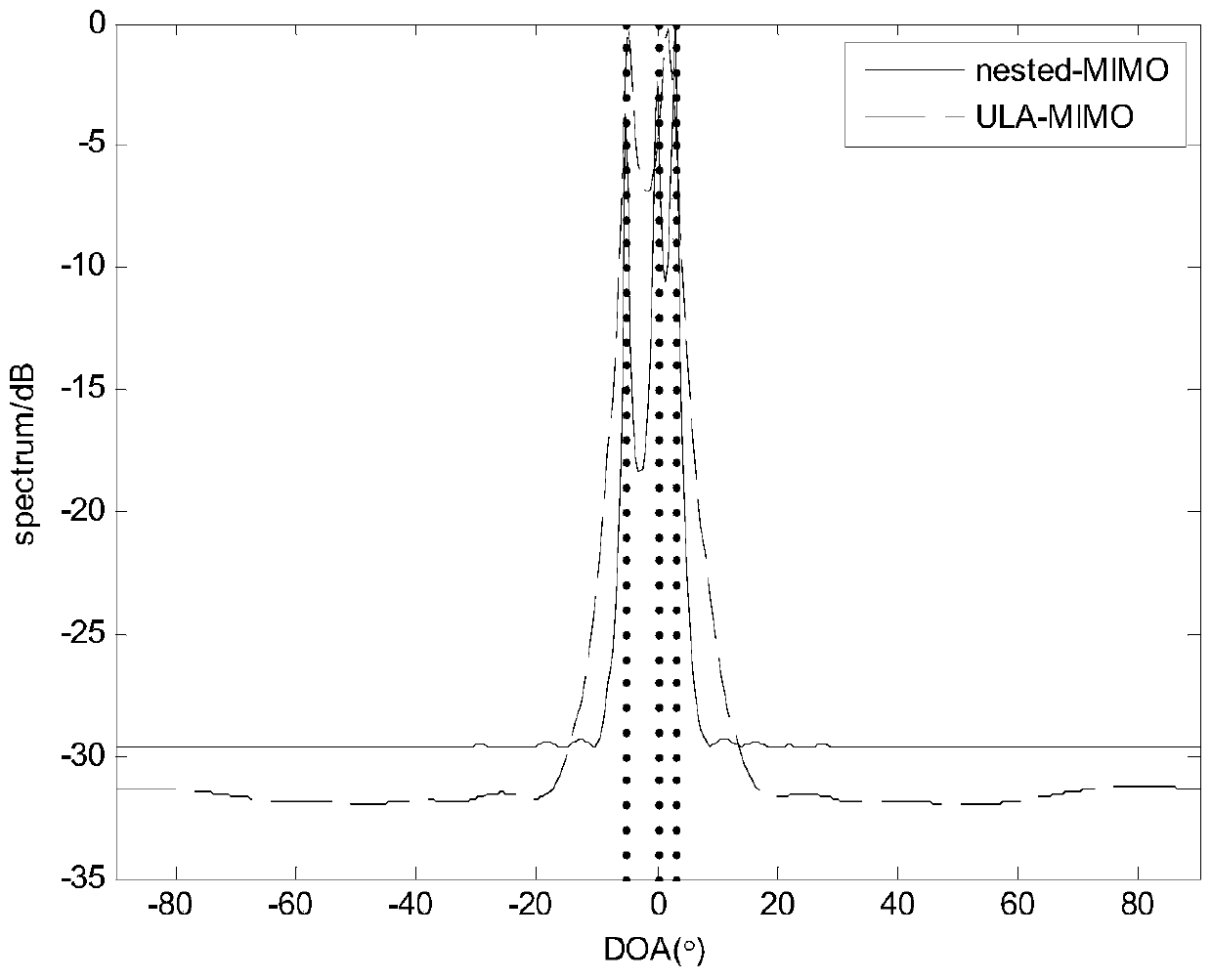Direction of arrival estimation method for mimo radar based on nested array
A technology of direction estimation and radar waves, applied in the field of radar, can solve problems such as limited degrees of freedom, impossibility of engineering realization, multi-antenna resources, etc., and achieve the effect of high degree of freedom and easy engineering realization
- Summary
- Abstract
- Description
- Claims
- Application Information
AI Technical Summary
Problems solved by technology
Method used
Image
Examples
Embodiment Construction
[0037] refer to figure 1 , the application scenario of the present invention includes a transmitting array of M array elements and a receiving array of N array elements. The receiving array is a second-order nested array, and the second-order nested array is composed of two uniform linear arrays cascaded: the first-level uniform linear array has N r1 array elements, array element spacing d r1 =1 / 2λ, the mth array element is located at md r1 , m=1,2,...,N r1 , the second uniform linear array has N r2 array elements, array element spacing d r2 =(N r1 +1) d r1 , the nth array element is located at n(N r1 +1)d r1 , n=1,2,...,N r2 . The transmitting array is formed by the first and last array elements of the nested array, and the number of array elements M=2.
[0038] refer to figure 2 , the implementation steps of the present invention are as follows:
[0039] Step 1: Build a MIMO radar model based on nested arrays.
[0040] 1a) Let the number of array elements for ...
PUM
 Login to View More
Login to View More Abstract
Description
Claims
Application Information
 Login to View More
Login to View More - R&D
- Intellectual Property
- Life Sciences
- Materials
- Tech Scout
- Unparalleled Data Quality
- Higher Quality Content
- 60% Fewer Hallucinations
Browse by: Latest US Patents, China's latest patents, Technical Efficacy Thesaurus, Application Domain, Technology Topic, Popular Technical Reports.
© 2025 PatSnap. All rights reserved.Legal|Privacy policy|Modern Slavery Act Transparency Statement|Sitemap|About US| Contact US: help@patsnap.com



